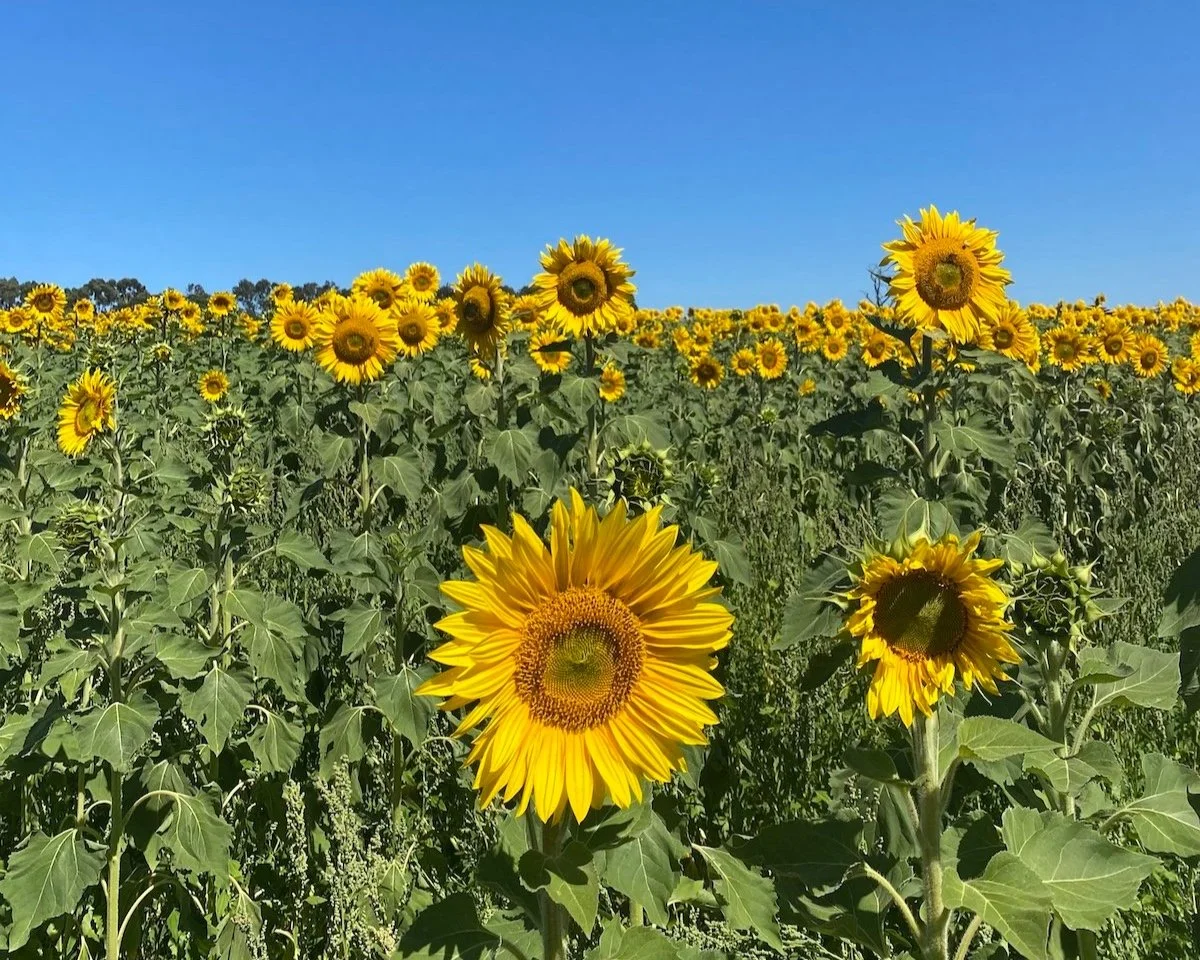Follow the sun
Did you know that there is a word in the English language specifically to describe a person who loves flowers? It’s anthophile.
At the end of last year, our neighbour planted a row of sunflowers at the front of his house, that he had raised from last year’s seeds. He planted them in pure compost, and they shot skyward within weeks. Every morning they all look to the right and watch the sunrise, slowly turning their heads, straight-backed, as the day passes, to salute the sunset.
The summer heat these past few weeks has been searing, but my neighbour’s sunflowers don’t seem to mind. The sun wilts me, but they soak it in and beam it back to us with a wink and a grin. There is a school at the end of our street and the sunflowers have become locally famous, children and their parents stopping to admire them on their walks to and from school. Mothers like to cup their hands around the flower-heads - as big as bread plates - while bees harvest pollen until they are so drunk and heavy they can barely fly.
Yesterday we followed the sun and a dusty dirt road to a paddock on a hill beside an ice-cream van and a barely-there dam. Growing on the hill were hundreds, thousands, possibly millions of sunflowers. Nobody was counting. The hill was swathed in gold and green, and peppered with families in sensible shoes carrying secateurs, and Instagrammers in gingham sundresses carrying selfie-sticks.
We picked seven stems to give to a friend, but then we stopped for lunch at a pub on the way home, and the traffic was terrible so we had to take Scout straight to her horse-riding lesson, and by the time we finally made it home those sunflowers looked about as good as you’d expect after spending six hours in the boot of a hot car, without water.
I popped the sunflowers into a jar instead, set inside an old urn by the window, and they transformed my home in the south of Australia into somewhere old and elegant (but still slightly shabby) in the south of France. Two ladybirds climbed over their stems, and sunlight tickled their crushed and bruised petals.
We all sat on the floor playing UNO (I am now the Bulger Family champion, thanks to a the-dealer-didn’t-shuffle-properly hand of four wild-cards and a yellow 2+), Scout still in her riding jodhpurs, as the light danced and played over that flower-filled window, slowly sinking and deepening, until it was time to take the children upstairs.
Vincent van Gogh didn’t only paint sunflowers in a ceramic vase. In one painting, one of my favourites, they rest on a table, the cut ends of the stems staring out at us while the petals gently wither, folding inwards from age. Old and dying flowers have a broken-things beauty of their own, a decaying loveliness we could all probably embrace, if we were braver than we are.
Van Gogh planned, once, to paint a dozen panels of sunflowers in preparation for Paul Gaugin’s visit. “A symphony of blue and yellow,” he wrote to his brother. He was painting sunflowers in 1888, three years after the house I’m living in was built. I wonder if the original owners of this house ever brought stems of these big, bright, furry favourites home to brighten the same window where mine shine as I sit and type. Did the first owners of this house know, then, that a sad and tortured man was painting sunflowers in Arles, France? Or that he would one day become one of the most lauded and beloved artists in history?
And why is yellow the colour of joy and madness and sickness? Who makes this stuff up?






